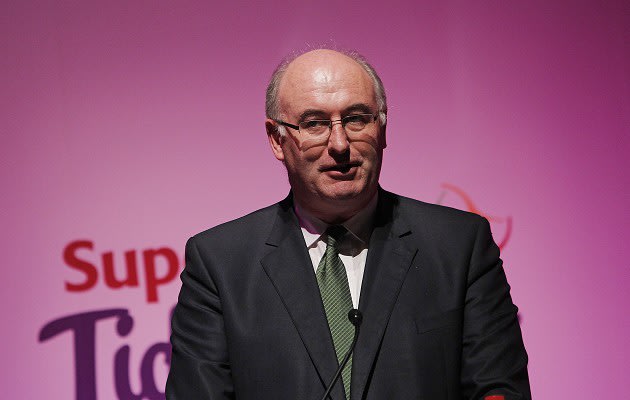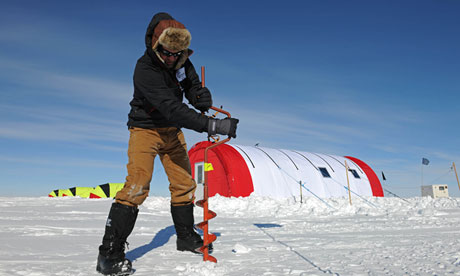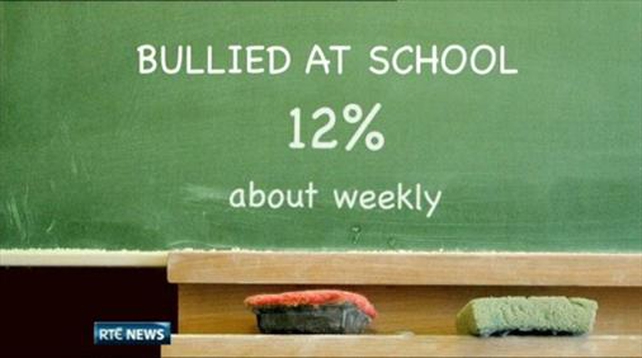Children's benefit payments would have received the axe if universal childcare were introduced,

 Francis Fitzgerald.
Francis Fitzgerald.
Direct child benefit payments would have to be sacrificed if high quality universal childcare is introduced, Children’s Minister Frances Fitzgerald has indicated.
The Fine Gael TD made the comment in an interview in which she signalled her support for reforming the child benefit system.
Ms Fitzgerald has expressed backing for the idea of providing better quality childcare instead of paying money directly to parents every month.
It would see the €2bn a year paid to families being diverted into establishing a Scandinavian-style model of subsidised universal childcare.
Ms Fitzgerald said the country has yet to have a “debate about where we’re putting our money”, adding that the system of individualised payments “was a kind of Celtic Tiger thing”.
However, the evidence is “unequivocal” that children gain from early intervention by support services, she pointed out.
Intervention
“But there probably isn’t a country in the world that can do both universal childcare and direct payments,” the minister said.
“If we really know that the best outcomes for children — particularly vulnerable children — is to get in early with universal services, there is a real policy question there, especially if we’re spending €2bn on child benefit,” she added in the interview with the Irish Times.
In this month’s Budget, child benefit was cut by between €10 and €20 per child, depending on how many are in the family.
For the first two children, the rate was cut from €140 to €130 each a month, from €148 to €130 for the third child and from €160 to €140 for the fourth and each subsequent child.
A move away from direct payments would prove highly contentious, particularly within the Labour party.
As a first step, Ms Fitzgerald is in favour of extending the free pre-school programme at a cost of €175m, but she said it is not possible in current economic circumstances.
She admitted any move away from direct payments in favour of better pre-school and after-school care could be difficult.
“I see challenges for families who need money to look after their children.
“But from where I sit, if we really want to help families, and more vulnerable families, universal services help children do better, stay in school and benefit from schooling,” she said.
The minister also plans to reform the child protection system by increasing accountability and providing early services.
The Child and Family Support Agency to be established early next year will take over responsibility for child protection and early intervention services from the HSE.
70% of Irish householders have paid tax charge
Says Minister Phil Hogan


Minister for the Environment Phil Hogan has said that 70% of those liable to pay the household charge had done so.
In a statement today, Mr Hogan said end of year figures giving the numbers who had paid the household charge show how wrong critics were about how much would be collected.
The minister thanked and commended those who had registered the more than 1.1 million properties.
“Twelve months ago when this charge was introduced there was plenty of doom merchants who said the charge would not be collected and people wouldn’t pay. How wrong they were,” Mr Hogan said.
“70% of those liable to pay the charge have done so and I commend all those households for doing the right thing.
“We had elected representatives who actively encouraged people to break the law and not pay the charge” the minister added.
“These self-same people are now calling for more funding for local authorities and at the same time encouraging people not to pay.”
The minister said the charge had resulted in the collection of more than €113m which would be reallocated to local authorities through the Local Government Fund.
Local Government Management Agency Chief Executive Paul McSweeney described the figures as a great result.
Speaking on RTÉ’s News at One he said: “We are still seeing an increase of about half a million to €600,000 per week, so about 4,500 to 5,000 properties per week are still being registered.”
On New Year’s Day, the household charge will be abolished and will be replaced with the Local Property Tax.
For liable persons who did not pay the household charge in 2012, and who pay the charge to the Local Government Management Agency by 30 April 2013, arrears will be capped at €130.
From 1 July next year, any outstanding household charge will be increased to €200 and added to Local Property Tax due on the property.
Healthy drinking advice for new Year‘drink but be aware of issues’


Knowing the one that’s one too many isn’t just a catchy slogan, it’s vital to ensure safe celebrations over the New Year,
Many Irish people have a tendency to overindulge around Christmas and the New Year but it’s important to be conscious of the risks posed by binge drinking, which is likely to increase the risk of accidents, injuries, violence and poisoning, along with more long-term impacts on your health.
Binge drinking is defined by the HSE as the consumption of six or more standard drinks in a single session, i.e. a pub measure of spirits, a small glass of wine, a half pint of normal beer, or a 275ml alcopop.
Up to 11 standard drinks a week for women and up to 17 standard drinks a week for men is considered ‘low risk’ by the health executive, but it’s important that they are spread out over the week and not saved for one session or big night out.
When these limits are consistently exceeded, health risks start to accumulate, according to the HSE.
Drink Aware has a handy Drinks Diary facility on its site, www.DrinkAware.ie, that indicates whether you’re drinking within the low risk guidelines, need to cut down or seek help.
The Drinks Diary gives you instant feedback on how many standard drinks you’re drinking, how many calories you’ve consumed and how much you’re spending, helping you stay healthy and in control.
If, in spite of your best intentions, you end up drinking more than you should, Drink Aware advises that there are a few things you can do to ease ‘the morning after’.
- Drink as much water as you can before going to sleep, and put some beside the bed
- Take an antacid to settle your stomach
- Alcohol is a depressant, so tea or coffee can perk you up but they can also dehydrate you, so keep up the water consumption as well
- Drinking lowers your blood sugar level, so eat as soon as you can. Bananas, cereal, or egg on toast are all good morning-after snacks. Fruit smoothies can help replace lost vitamins as well as fight the thirst.
Remember however that no matter what remedies you try, time is the only cure. Your body gets rid of roughly one standard drink per hour and no amount of black coffee can speed up your body’s ability to eliminate alcohol.
Even if you haven’t had a drink since last night, you may still be unfit to drive – the legal blood alcohol limit is 50mg per 100ml of blood while a limit of 20mg per 100ml of blood applies to professional drivers and learner drivers.
All drivers are affected by even one drink and any alcohol impairs driving and increases the risk of collision. For any given amount of alcohol consumed, young drivers are relatively more affected, according to the Road Safety Authority.
Alcohol is estimated to be a contributory factor in one in three fatal collisions and the only safe advice is to never drink and drive, even the morning after the night before.
12% of Ireland’s fourth class students bullied – survey says
Twelve per cent of fourth class pupils say they are being bullied almost every week, according to a survey.
The survey was conducted as part of the International Association for Evaluation of Educational Achievement tests and involved 4,500 students.
A quarter of students said were bullied once a month and 64% said that they were hardly ever bullied.
Bullying behaviour included being made fun of or called names, left out of games, or activities, having lies spread about them, having something stolen from them, being hit or hurt by other students or being made do things they did not want to do.
The figures show that compared to schools internationally, Ireland has less bullying in schools.
Only four countries, Azerbaijan, Sweden, Georgia and Denmark, had a better bullying record.
Why did the Antarctic drilling project fail?


A few members of the team that attempted to search for life in Antarctica’s Lake Ellsworth are already beginning a long, sad and disappointed journey home.
The rest will be gone, along with all the equipment, the stores and a union jack, in a few weeks’ time, leaving no trace of this daring mission to reach beneath the ice.
The most exciting science often carries the greatest risk and, despite three years of planning, this is a gamble that has not paid off.
The talk from the team is brave, of course – of lessons learned, of valuable experience, of regrouping to try again.
But the voice of the chief scientist, Prof Martin Siegert, conveys the painful combination of exhaustion and failure that marks all projects that go wrong.
And it carries memories of another brave British attempt to search for life, on another planet almost 10 years ago.
The aim in Antarctica was to use a hot-water drill to reach down through the two miles of the ice sheet to open a borehole to the waters of Lake Ellsworth below.
The plan had estimated that five days of drilling would do the job and would then allow for 24 hours before the hole re-froze to lower devices into the water and sediment.
In theory, by now, the team should have been hauling to the surface precious containers holding samples from a lost and hidden world isolated for up to half a million years.
Instead the hot water drill did not manage to reach into the depths as required.
The most exciting science often carries the greatest risk and, despite three years of planning, this is a gamble that has not paid off”
The drilling plan called for the creation of a large cavity in the ice to act as a reservoir and as a means of regulating the pressure from the lake below.
The cavity was formed – so far, so good – but when the main borehole was drilled, just 1.5m from the hole leading to the cavity, it could not make a connection down below.
The team assumed that the borehole would descend vertically but maybe it veered off slightly which meant that an accurate aim – and connection – was not possible.
And without being able to hook up the main borehole to the cavity, countless gallons of hot water were wasted in the attempt and the limited fuel stores rapidly depleted.
On Christmas Eve, a fateful decision approached. This £8m project had coped with equipment breakdowns and last-minute hurdles, ferocious weather and utter remoteness.
At one stage, an electronic component the size of a thumbnail – essential to the running of the main boiler – had to be flown out all the way from Britain.
But in the end it was the drilling that proved the project’s undoing: it simply could not continue because fuel was running low.
By the evening, gathered in the main tent, the team had to face an awful moment: there was no option but to pull the plug.
 Martin Siegert, chief scientist on the drilling project
Martin Siegert, chief scientist on the drilling project
The chief scientist, and main driver behind the project, Prof Martin Siegert, prepared a few words for on-site cameraman Pete Bucktrout. It was ‘”Game over”.
Last summer, when I first met Prof Siegert, I was too polite to remind him of what had happened to another British science project, the Beagle 2 mission to Mars, the spacecraft named after the ship that had carried Charles Darwin.
That clever piece of engineering was a tiny lander that was carried to the Red Planet in 2003 on board the European Space Agency’s Mars Express orbiter.
Back then many of us gathered with Beagle’s mastermind, Prof Colin Pillinger, to wait to hear the first signal that the spacecraft had touched down safely. The signal never came; Beagle went missing, presumed dead.
So it was to my surprise that Prof Siegert himself brought up the parallel, comparing that audacious attempt to search for life on Mars with his own bid to seek it in the unlit depths beneath the Antarctic ice sheet.
At the time, in that summer conversation, neither of us realised an eerie coincidence. Beagle crashed on Christmas Day 2003; the Lake Ellsworth mission was abandoned on Christmas Eve 2012.
Over a crackly satellite phone connection today, Prof Siegert managed a laugh at the timing.
But there is a difference between the two projects. Funding was never found to launch another Beagle to Mars while it is likely that another attempt will be made on Lake Ellsworth.
The team will work on a revised plan next year. Another go may be tried in four or five years’ time.
For the moment, though, the fundamental question that drove both missions remains unanswered: what is the limit to where life is possible?


No comments:
Post a Comment